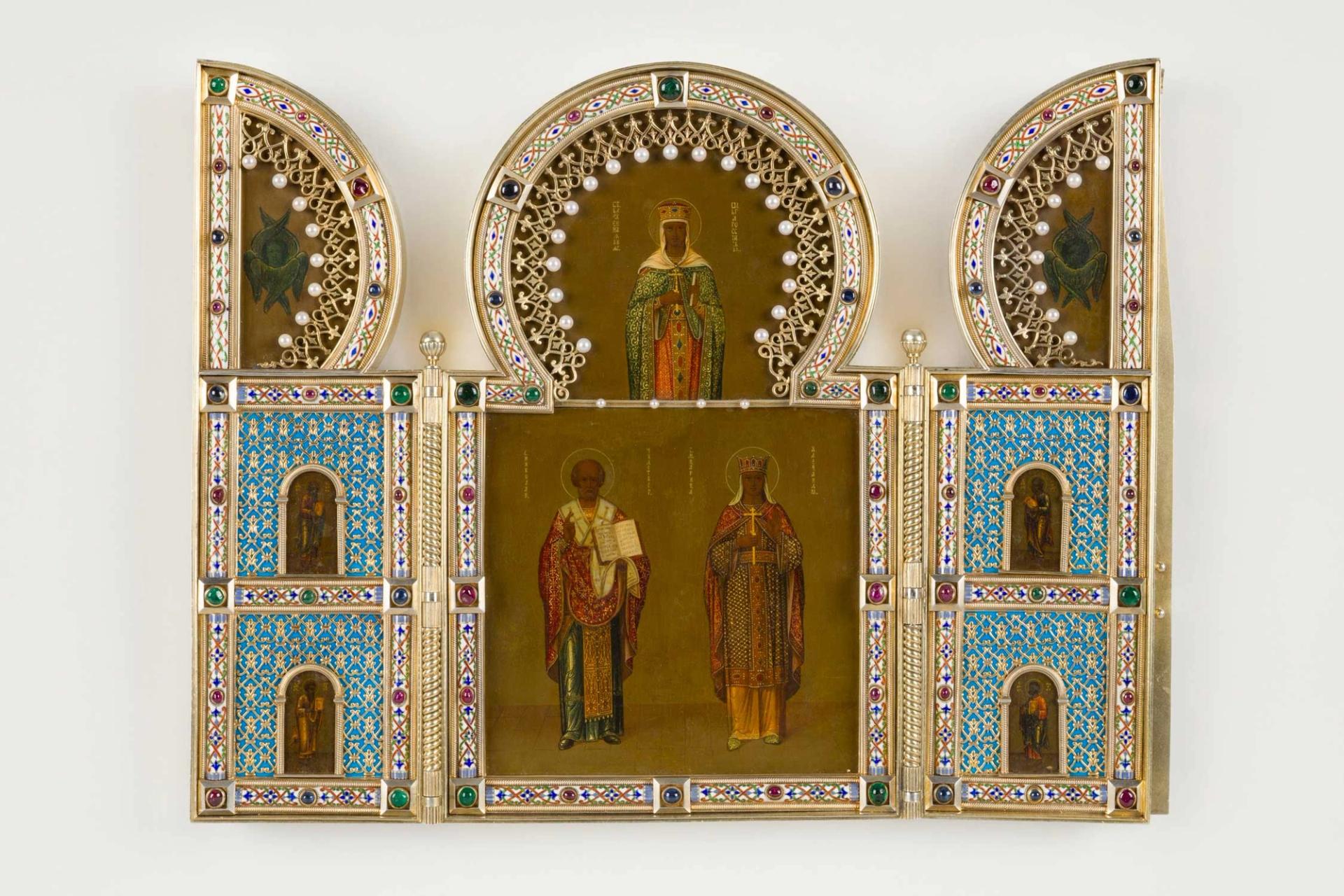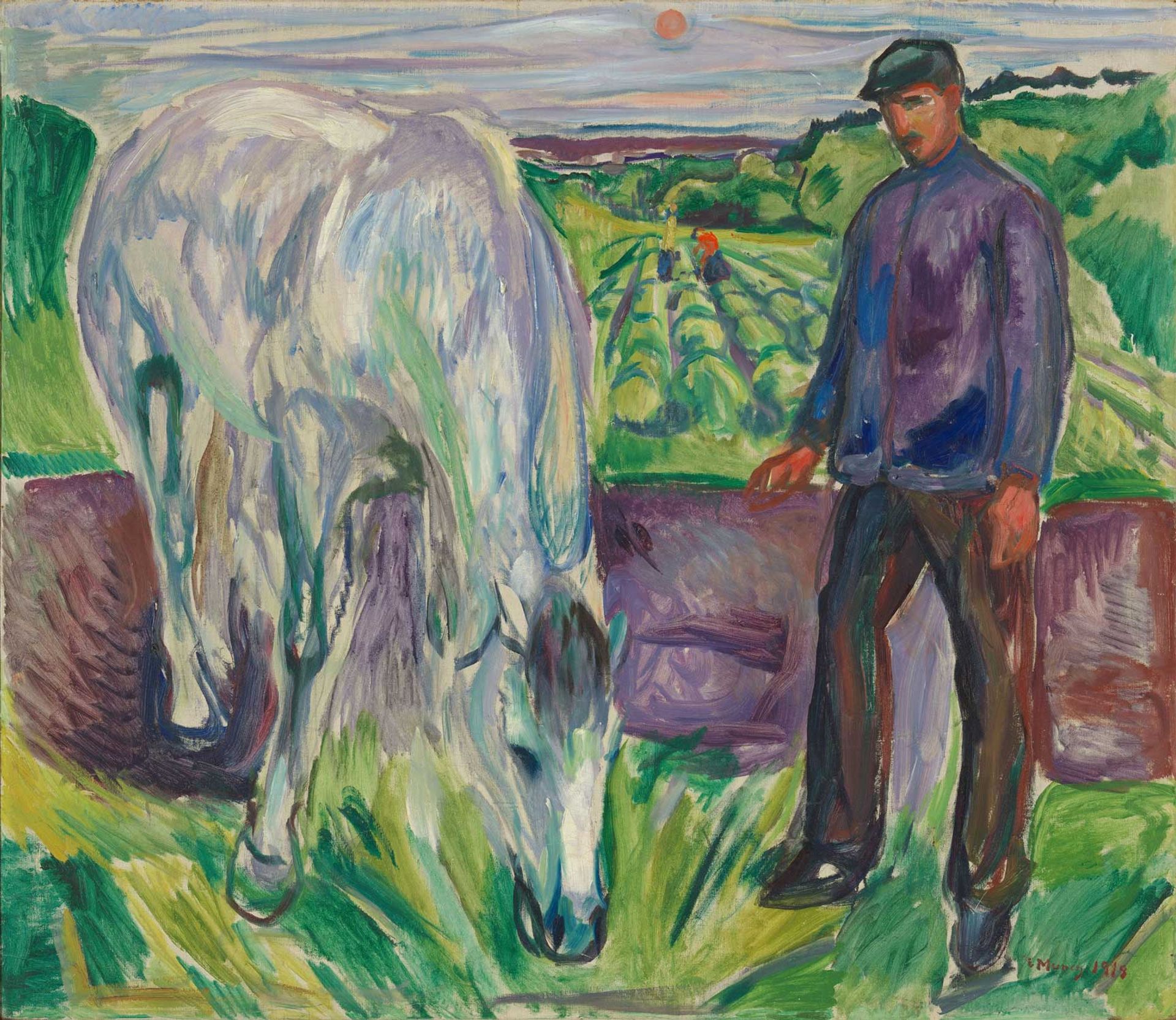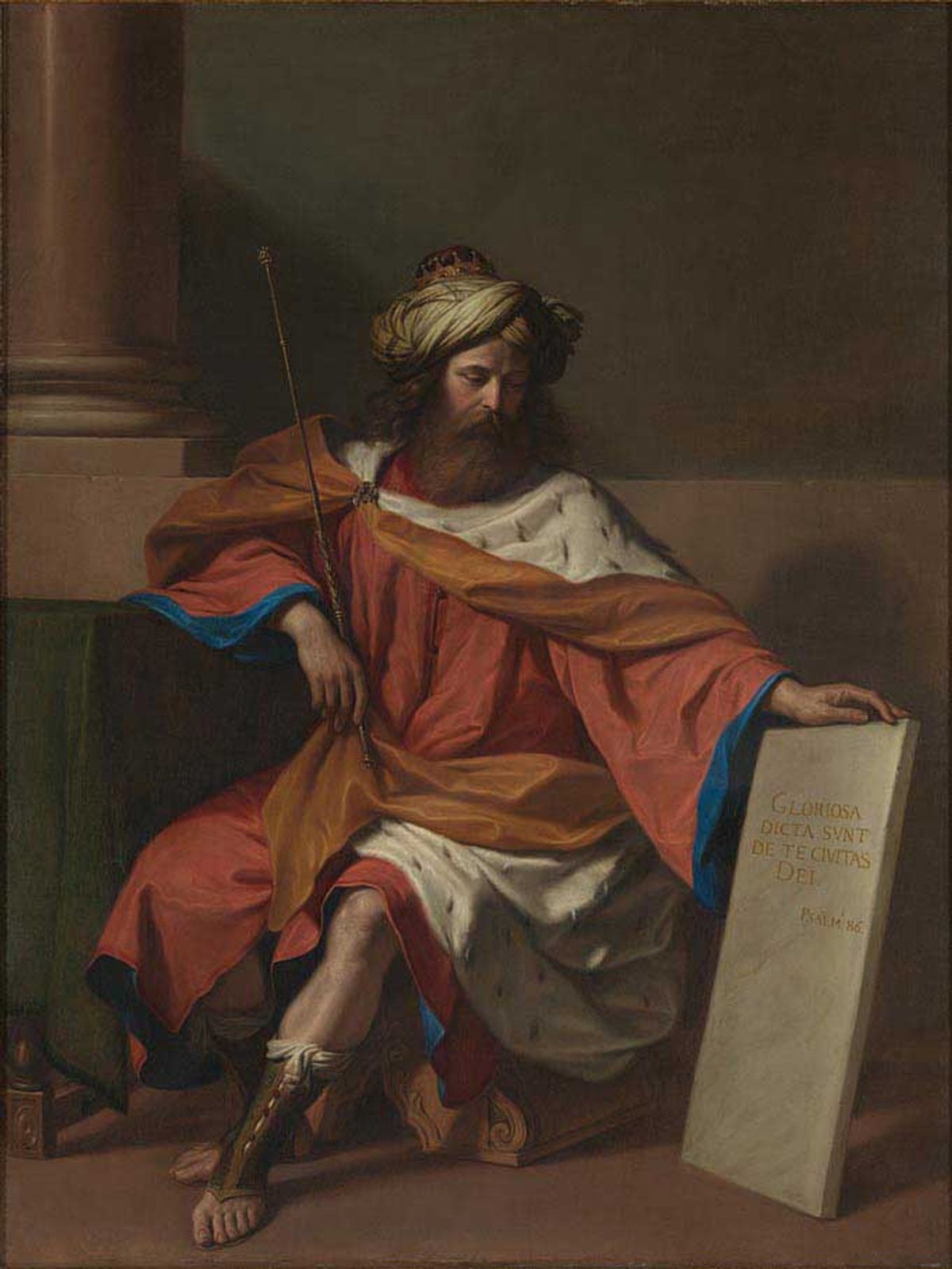King David (1651) by Guercino, National Gallery, London
Guercino’s King David has now joined its two companion works at the National Gallery, settling £5.6m in inheritance tax from the estate of Jacob Rothschild through the UK’s Acceptance in Lieu scheme. The Bolognese master was originally commissioned by the nobleman Giuseppe Locatelli to paint King David and The Cumaean Sibyl with a Putto, but sold the latter instead to Prince Mattias de’ Medici. Guercino then created The Samian Sibyl with a Putto as a replacement for Locatelli, continuing the prophetic theme. The two sibyls entered the National Gallery in 2011 and 2012 respectively. Rothschild, the financier and philanthropist who chaired the gallery’s board in the late 1980s and 90s, had long wished for all three works to be reunited, according to his daughter Hannah.

© Musee du Louvre, Dist. GrandPalaisRmn/Thomas Clot
Fabergé imperial triptych (1895) by Michael Evlampievich Perkhin, Musée du Louvre, Paris
Mikhail Evlampievich Perkhin, the Fabergé goldsmith who crafted many of the Russian imperial family’s bejewelled Easter eggs, was also the maker of this triptych icon. St Petersburg aristocrats presented it to Tsar Nicholas II in 1895, honouring the birth of his first child, Grand Duchess Olga. Made from Karelian birch and inlaid with precious stones and pearls, the triptych evokes an onion-domed Russian Orthodox church. The central panel depicts Saint Olga, the first Slavic leader to adopt Christianity, above the imperial couple’s patron saints, Nicholas and Alexandra. The Société des Amis du Louvre funded the €2.2m purchase from the New York gallery A La Vieille Russie as part of a €4m gift supporting the Louvre’s new Byzantine and Eastern Christian art department.

Courtesy National Gallery of Australia
Man with horse (1918) by Edvard Munch, National Gallery of Australia, Canberra
A rarely seen, late-career painting by Munch has been described as the National Gallery of Australia’s most significant acquisition since Jackson Pollock’s Blue Poles (1952), the record price of which divided the nation in 1973. Man with horse, a gift from the philanthropist Geoff Ainsworth, dates from soon after Munch moved to Ekely, a rural estate outside Oslo where he spent the last three decades of his life. The painting exemplifies a shift towards landscapes with a brighter mood and palette than his early angst-filled works. Munch returned repeatedly to the theme of the horse—a symbol of strength, freedom and nobility—inspired in part by Rousseau, his own white horse that roamed the grounds at Ekely.


